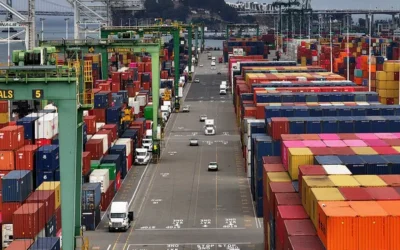The following is a guest post from Glenn C. McCoy, Jr., principal of National Tax at Ryan. Opinions are the author’s own.
Apple’s ongoing $26 million dispute with Florida’s Department of Revenue over digital service taxation illustrates a broader trap hitting importers nationwide: When states reinterpret how federal charges flow through their tax systems, the resulting bills can blindside even sophisticated companies. Now, with President Trump’s imposed tariffs, businesses face a similar shock — states can tax the tariff itself, compounding import costs in ways that can devastate margins.
Here’s what most CFOs miss: States like New York, California and Illinois treat tariffs as part of your product cost, making them subject to sales tax. On a $1 million shipment with 25% tariffs, you’re not just paying $250,000 to customs — you could face additional state taxes on that entire $1.25 million, pushing your real cost increase well beyond the headline tariff rate.
The hidden tax-on-tax problem
When a company imports goods subject to a 25% tariff, that’s just the beginning of the tax burden. Most states treat tariffs as part of the product’s cost basis, subjecting them to additional sales tax. For example, on a $1 million import with a $250,000 tariff, a company could face an additional $75,000 in sales tax (assuming a 6% rate) — effectively a tax on the federal tax.
What catches CFOs off guard is that even when tariffs are separately stated on invoices, most states still include them in the sales tax base. New York, California, Illinois and Washington have all issued guidance confirming this treatment, creating a compounding effect that can significantly impact margins, especially for businesses with substantial import operations.
Who pays matters more than you think
The critical factor determining state tax treatment isn’t whether tariffs exist, but who serves as the importer of record. When a seller imports goods and passes tariff costs to buyers, states like New York, California, Illinois and Washington treat those tariffs as part of the taxable sales price — even if itemized separately.
However, if the buyer serves as the importer of record and pays tariffs directly to U.S. Customs and Border Protection, some states may exclude these amounts from the sales tax base. This seemingly minor distinction in purchase agreements can mean the difference between paying sales tax on tariffs or avoiding it entirely.
Strategic planning opportunities
For income tax purposes, businesses have more flexibility. Unlike the rigid sales tax treatment, companies can choose either:
- Capitalize tariffs as part of inventory or asset costs, or
- Deduct them as ordinary business expenses under IRC Section 162
This choice can significantly impact cash flow and financial reporting. For high-turnover inventory, immediate deduction may provide better tax efficiency. For capital assets or slow-moving inventory, capitalization might align better with matching principles and financial covenants.
Property tax implications often overlooked
The National Association of Home Builders estimates that tariffs on Canadian lumber alone could increase construction costs by nearly $11,000 per home. For companies with significant real estate holdings or those planning construction projects, these increased costs flow directly into property tax assessments.
Even more concerning for manufacturers and distributors: States that tax business personal property or inventory include tariff costs in the taxable base. To illustrate, a distribution center holding $10 million in imported inventory could see its property tax assessment increase by $2.5 million due to 25% tariffs, resulting in tens of thousands in additional annual property tax.
Nexus expansion risk
Perhaps the most overlooked effect of tariffs is their potential to trigger new state tax filing obligations. As companies adjust supply chains and pricing strategies in response to tariffs, they may inadvertently create a tax nexus in new states.
Consider a company that begins stockpiling imported goods in warehouses across multiple states to hedge against future tariff increases. This inventory presence creates a physical nexus for income tax purposes. Meanwhile, tariff-driven price increases might push sales over economic nexus thresholds (e.g., $100,000 in annual sales), creating new sales tax collection obligations.
Key considerations for financial leaders
CFOs should take immediate steps to assess and mitigate tariff-related state tax exposure:
- Review purchase agreements: Clearly specify which party serves as importer of record and who bears responsibility for tariff-related taxes
- Model multi-state impact: Calculate the true all-in cost of tariffs, including state and local taxes across your operational footprint
- Evaluate income tax elections: Consider working with tax advisers to determine optimal treatment of tariffs for federal and state income tax purposes
- Monitor nexus expansion: Track how supply chain adjustments might create new state tax obligations
- Consider structural changes: Evaluate whether changing the importer of record arrangements or restructuring purchasing flows could minimize the state tax burden
Looking ahead
As tariff policies continue to evolve, the state and local tax implications will only grow more complex. States facing budget pressures may become more aggressive in their interpretation of tariff taxability. Companies that proactively address these issues now will be better positioned to manage margins and avoid costly surprises during state tax audits.
The message is clear: when calculating the impact of tariffs on your business, don’t stop at the federal level. The real cost often lies in the maze of state and local tax consequences that follow





